Ferrite on 2m Slimjim Antenna Feed Lone
The Slim Jim is probably one of the cheapest and easiest antennas to make, and it's a very handy one too. You can typically make one of these for under £10, they roll up easily for storage and travel, and are great for use at home, or when travelling, for accessing local repeaters.
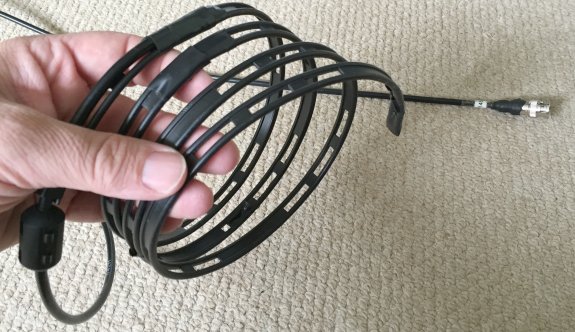
Most people make these for 2m use, but you can make them for 70cm use if required.If you decide to make a 2m antenna, you'll end up with 1.5 metres of ladder line as the main antenna that can roll up neatly in a coil and can be used hanging from a curtain rail above a window, dropped down from a tree, or taped to the side of a fishing pole and raised into the air.
What you'll need to make a Slim Jim:
- Some balanced ladder line feeder – either 300 or 450 ohm will do – If making an antenna for 145MHz, then you'll need a length of 1.5 metres. For other frequencies, use the calculator later in this article
- Some co-ax long enough to reach from the base of the slim jim to your radio
- Radio connector – I opted for a BNC plug, which is easy to adapt for a base station or a handheld
- Soldering iron / solder
- Ruler
- Wire cutters
- Electrical tape
- Optional: Clip on ferrite
How to make it:
The dimensions are crucial, and here I'd highly recommend M0UKD's Slim Jim Calculator. You put in the frequency you're after, e.g. 145.500MHz, and the calculator gives you all of the values you need.
Go to www.m0ukd.com/Calculators/Slim_Jim and print out the dimensions you're after.
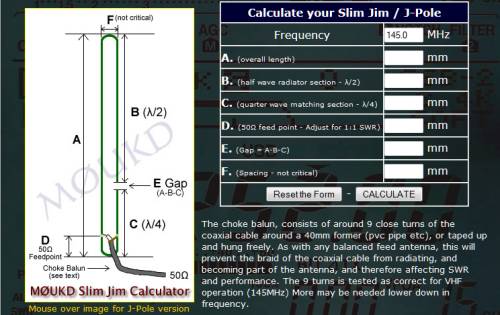
Once you know the lengths you're after, cut the ladder line to just over the overall length.
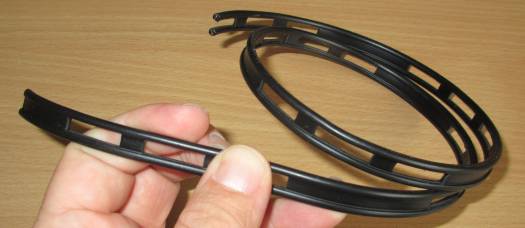
Now, strip off the wire at each end of the ladder line and solder the two wires at each end together – You're aiming for the top and bottom to be shorted together making the overall length shown on M0UKD's site.
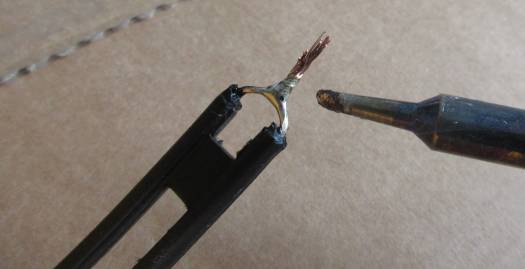
Next, you have to cut out a notch on one side of the ladder line. For a 2m antenna, this is about 2cm and the length and position are specified on the dimensions you've got from the M0UKD site.
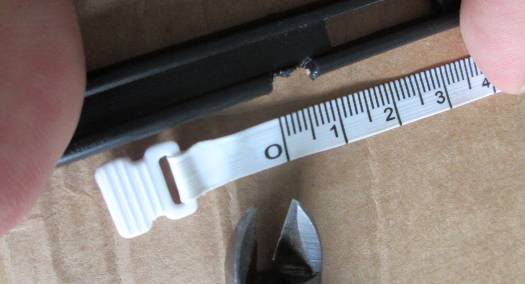
Now you need to solder one end of your co-ax feeder cable to the ladder line. You need to strip off the plastic insulation from the ladder line using wire cutters (at the place indicated on the M0UKD calculations) and solder the inner and outer core of the co-ax to the ladder line. I find it helpful to tape the two together before soldering. You can adjust the SWR by altering whereabouts you solder, but following the measurements has always given me a decent SWR.
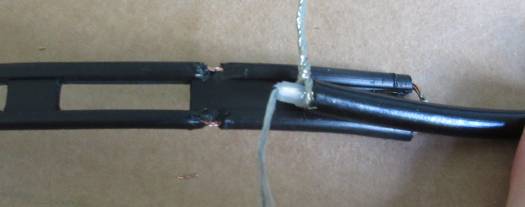
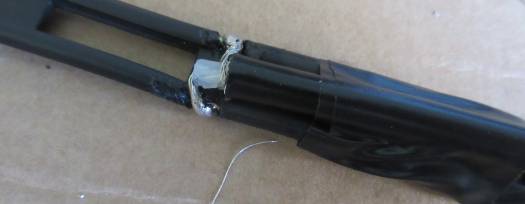
Now, it's a case of soldering the radio plug onto the other end of your co-ax. This could be an N-Type (common for a base station), PL259, SMA (fiddly to solder onto RG58), or a BNC Plug. I always opt for a BNC as they're easyish to solder onto RG58 and can be used with an adapter for a handheld or a base station without fuss.
That's it. Connect it up and test the SWR, then you're ready to go!
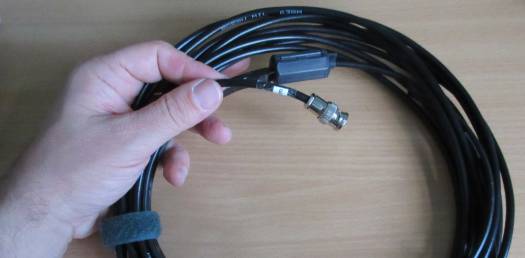
Optional enhancement
Optionally, you can add an "RF choke" at the point where the co-ax meets the ladder line – This helps to stop the co-ax from radiating. From the articles I've read, the best type is a "choke balun" (a set of between 7 and 9 tight turns of co-ax around a piece of 20-40mm pvc pipe). For me, this was unwieldy. Following an online suggestion, I tried a clip-on ferrite, which did seem to drop the SWR marginally. Use of a choke balun or multiple ferrites on the coax will no doubt be more effective, but of course increases the cost, size and complexity of this antenna.
Tried it? Let us have your comments…
More information on Slim Jims
There are plenty of websites out there contain detailed information on slim jims, theory and optimum construction. The aim of this page is to give some basic instructions for building a no-frills Slim Jim for under £10.
If you're after a more advanced article on construction and theory, try the following article: Notes on the Slim Jim Antenna by Dave Coomber M0UXB
Source: https://www.essexham.co.uk/slim-jim
0 Response to "Ferrite on 2m Slimjim Antenna Feed Lone"
Post a Comment